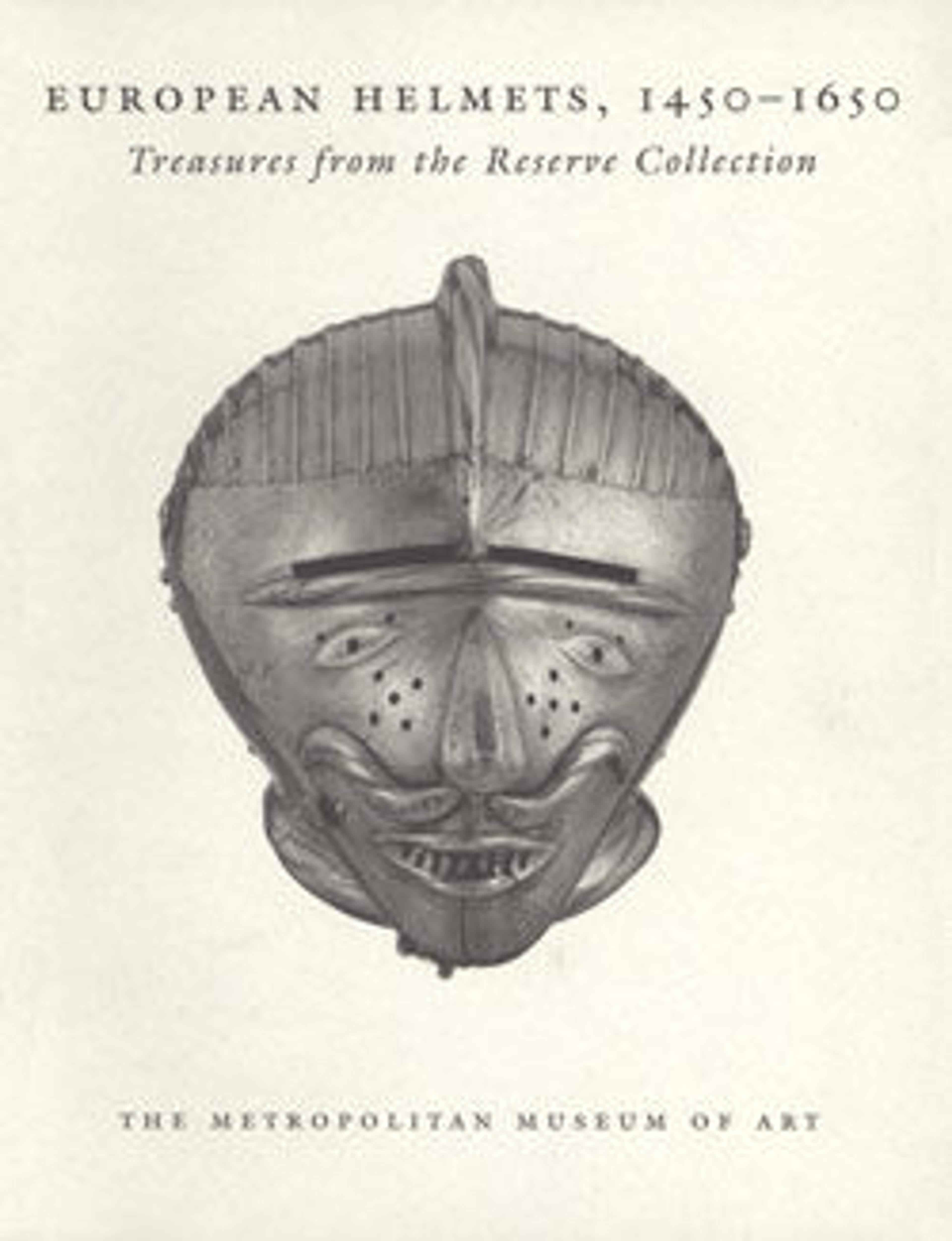Front Half of a Tournament Helm
Constructed of two sturdy plates of steel capable of withstanding the blow of an opponent's blunted lance, this front half of a helm for the joust was originally secured by pivots to the rear half (now missing) of lighter metal. The helm was bolted to the jouster's cuirass, thus rendering the head and torso rigid. The large ventilation opening on the right side is protected by a thick flange. Similar helms are recorded in English churches; this one is reputed to have come from Battle Abbey, Sussex. Traces of an armorer's mark, apparently an M surmounted by a crescent, which is thought to be that of Guillem Margot (active in Brussels, recorded 1505–20), are evident on the left side (only the tips of the crescent are discernible). The same mark appears on other armor parts in the Metropolitan Museum's collection, acc. nos. 14.25.572, 29.158.1h, 29.158.38, and 29.158.52.
Artwork Details
- Title: Front Half of a Tournament Helm
- Date: ca. 1510–20
- Geography: East Sussex
- Culture: Anglo-Flemish
- Medium: Steel, leather
- Dimensions: H. 15 1/2 in. (39.4 cm); W. 10 in. (25.4 cm); D. 8 1/4 in. (21 cm); Wt. 9 lb. 11.2 oz. (4399.8 g)
- Classification: Helmets
- Credit Line: Gift of William H. Riggs, 1913
- Object Number: 14.25.572
- Curatorial Department: Arms and Armor
More Artwork
Research Resources
The Met provides unparalleled resources for research and welcomes an international community of students and scholars. The Met's Open Access API is where creators and researchers can connect to the The Met collection. Open Access data and public domain images are available for unrestricted commercial and noncommercial use without permission or fee.
To request images under copyright and other restrictions, please use this Image Request form.
Feedback
We continue to research and examine historical and cultural context for objects in The Met collection. If you have comments or questions about this object record, please complete and submit this form. The Museum looks forward to receiving your comments.
